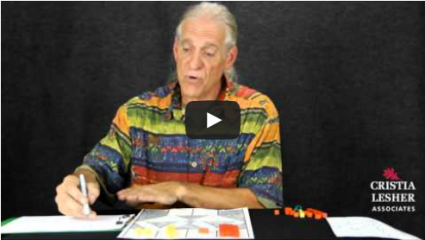Date: April 5th, 2016

When I teach math with manipulatives I have to be extremely organized, or I’m inviting a perfect storm. How I set up my classroom and manage materials are absolutely central to a lesson’s success. On the flip side, no matter how inspiring a lesson might be, poor logistics will derail it every time. The logistics […]
Click here for more
Date: February 25th, 2016

In the first part of my discussion about keeping control of my class while teaching with math manipulatives, I covered how I teach students to take their hands off the blocks within two seconds and give their full attention to me. Once I’ve accomplished that, I need to consistently enforce (and reinforce) the expectation that […]
Click here for more
Date: February 9th, 2016

Before I put a single manipulative in front of a single student, I invest a little time in telling them about my expectations of their behavior. By doing this, I am nurturing the relationships that allow me to routinely make respectful requests and expect compliance (that is, to be in control of my classroom). Further, […]
Click here for more
Date: January 13th, 2016

Personal Savings Account Score Sheet Tom Schersten: In the last video, we talked about how to play the basic trading game with a personal savings account paper and the score sheet. In this video, we’re going to talk about extensions to make the game go faster, and how to use it for subtraction. When we […]
Click here for more
Date: January 13th, 2016

Personal Savings Account Score Sheet Tom Schersten: In this video, I’m going to show a game that kids can play day after day that will give them lots of drill on place value and won’t seem like a drill, because they’re playing a game. Kids will roll dice which will tell them how many ones […]
Click here for more
Date: December 30th, 2015

Tom Schersten’s Game Mat Tom Schersten: In this video, I’m going to model subtraction on the My Way Highway. Usually when we teach subtraction, we are using the removal model, where what we’re taking away is already embedded with what we’re starting with. Today we’re going to be using the comparison model so you get […]
Click here for more
Date: December 14th, 2015

Tom Schersten: This video is going to model how to do subtraction on a number line. I am starting with 42, and I am going to be subtracting 27. I’m representing the 27 to be subtracted in yellow blocks, so that we can keep track of how many we have subtracted so far. I’m going […]
Click here for more
Date: December 2nd, 2015

Tom Schersten: We’re going to model addition on a number line. I’m adding the same two numbers I did in the previous video, 35 add 27, and on my number line, I’ve placed my 35 and my 27. To start this problem, I’m going to make my dot here, and write down that I’m starting […]
Click here for more
Date: May 19th, 2015

Tom Schersten: It’s not until fourth grade that the common core standards expect kids to have memorized the traditional algorithms for addition and subtraction. That means that in the second and third grades, we have to have other ways of the kids modeling how their thinking is going.
Click here for more
Date: May 6th, 2015

Tom Schersten: This video is going to show the power of understanding place value when adding three- and four-digit numbers. Please take a look at the example that I have here: 375 add 256. I’m going to start adding on the left side, because I know that that stands for 300, and this is 200, […]
Click here for more










